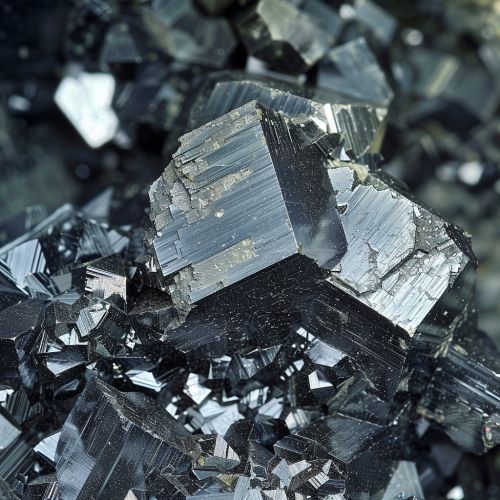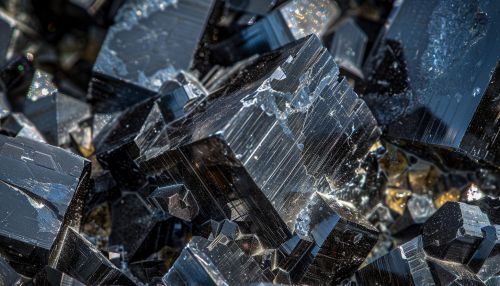Pyrolusite
Introduction
Pyrolusite is a mineral consisting primarily of manganese dioxide (MnO₂) and is an important ore of manganese. It is a black, amorphous or crystalline mineral with a metallic luster. Pyrolusite is the most common and most important manganese ore and is used extensively in the production of various manganese compounds, including ferromanganese, manganese dioxide, and potassium permanganate.
Occurrence and Formation
Pyrolusite is typically found in sedimentary deposits and is often associated with other manganese minerals such as manganite, hausmannite, and braunite. It forms under oxidizing conditions in both terrestrial and marine environments. The mineral can also be found in hydrothermal veins and as a secondary mineral in the oxidation zones of manganese-bearing ore deposits.
Physical and Chemical Properties
Pyrolusite has a Mohs hardness of 6 to 6.5 and a specific gravity of approximately 4.8. It is opaque with a submetallic to metallic luster and a black or bluish-black streak. The mineral is brittle and can form in a variety of crystal habits, including massive, granular, fibrous, and dendritic forms.
Chemically, pyrolusite is composed of manganese dioxide (MnO₂) and can contain impurities such as iron, silicon, and aluminum. It is insoluble in water but can be dissolved in hydrochloric acid with the release of chlorine gas.
Industrial Applications
Pyrolusite is a critical material in the metallurgical industry, particularly in the production of steel and iron. It is used as a deoxidizing agent and to improve the hardness and strength of steel. The mineral is also employed in the manufacture of dry cell batteries, where manganese dioxide acts as a depolarizer.
In the chemical industry, pyrolusite is used in the production of potassium permanganate, a powerful oxidizing agent used in water treatment, disinfection, and organic synthesis. Additionally, manganese dioxide derived from pyrolusite is used in the production of glass, ceramics, and pigments.
Extraction and Refining
The extraction of pyrolusite involves mining the ore from sedimentary deposits, followed by crushing and grinding to liberate the manganese minerals. The ore is then subjected to various beneficiation processes, such as gravity separation, flotation, and magnetic separation, to concentrate the manganese content.
Refining pyrolusite to produce pure manganese dioxide involves chemical processes such as leaching with sulfuric acid, followed by purification and crystallization. The resulting manganese dioxide can be further processed to produce various manganese compounds.
Environmental and Health Impacts
The mining and processing of pyrolusite can have significant environmental impacts, including habitat destruction, soil erosion, and water pollution. The release of manganese dust and fumes during mining and refining operations can pose health risks to workers, including respiratory problems and neurological effects.
Efforts to mitigate these impacts include implementing sustainable mining practices, using advanced dust and fume control technologies, and conducting regular health and safety assessments for workers.
Historical and Economic Significance
Pyrolusite has been known and used since ancient times. The mineral was used by the Egyptians and Romans as a pigment and in glassmaking. In the 18th and 19th centuries, pyrolusite played a crucial role in the development of the steel industry, leading to significant economic growth and industrialization.
Today, pyrolusite remains an essential mineral in various industries, and its demand continues to grow with the increasing need for manganese in modern technologies.
See Also


References
1. Klein, C., and Dutrow, B. (2007). The Manual of Mineral Science. John Wiley & Sons. 2. Anthony, J.W., Bideaux, R.A., Bladh, K.W., and Nichols, M.C. (2003). Handbook of Mineralogy. Mineralogical Society of America. 3. US Geological Survey. (2020). Mineral Commodity Summaries: Manganese.
